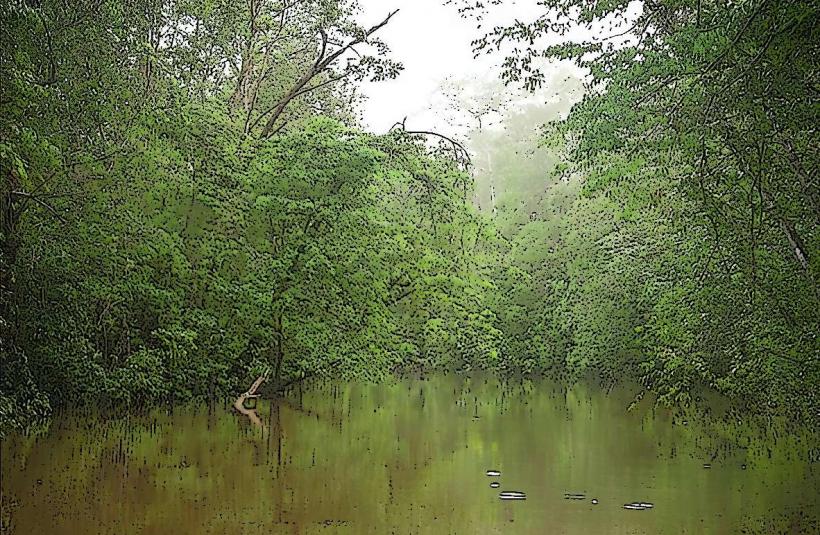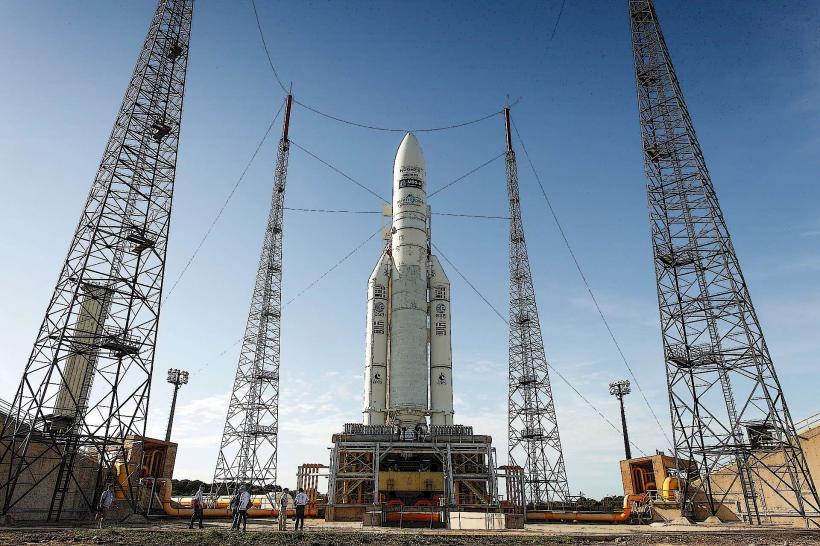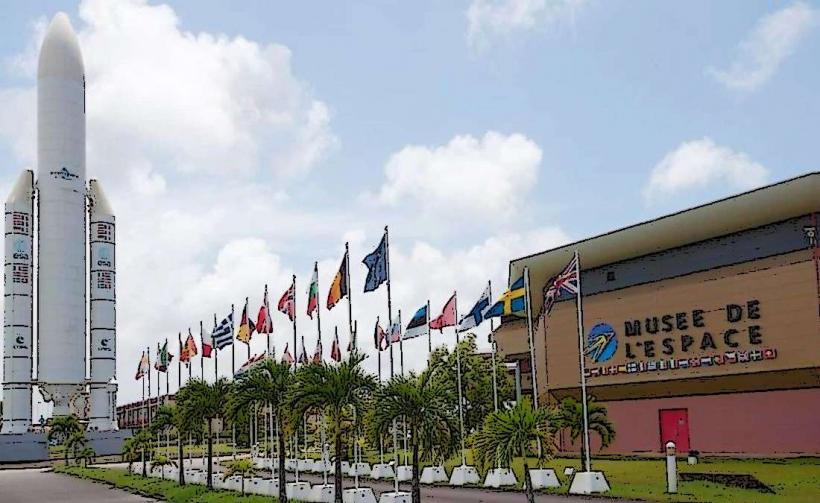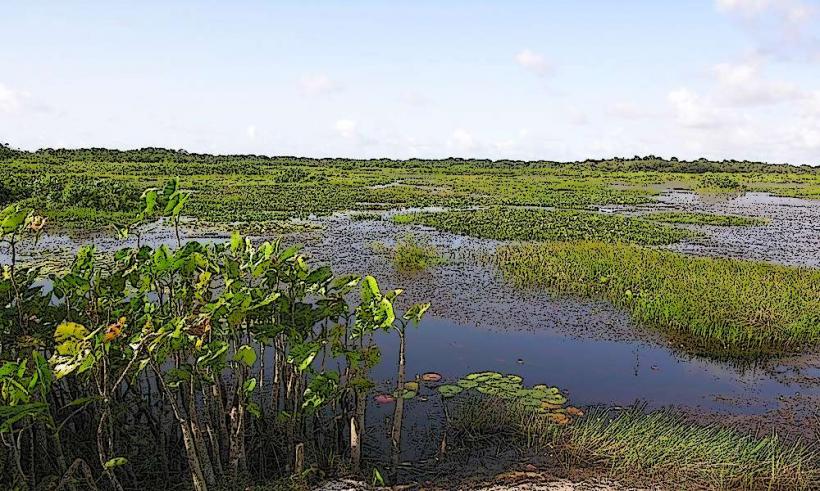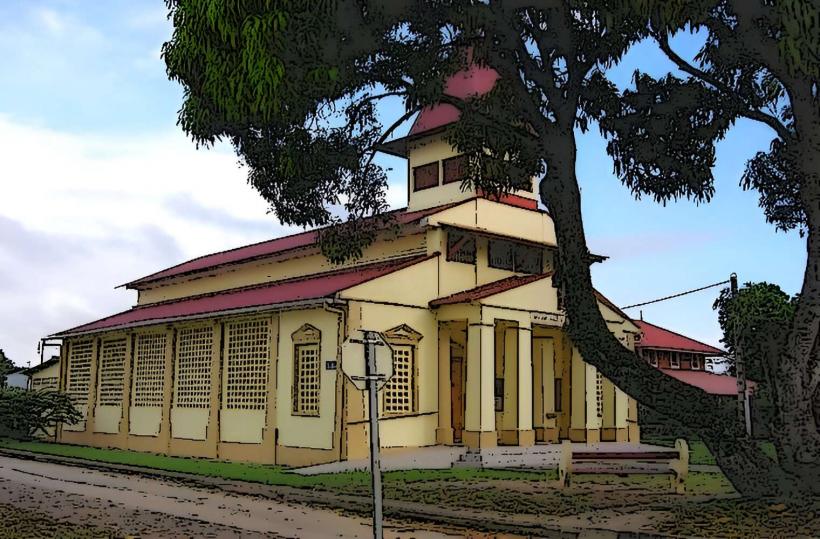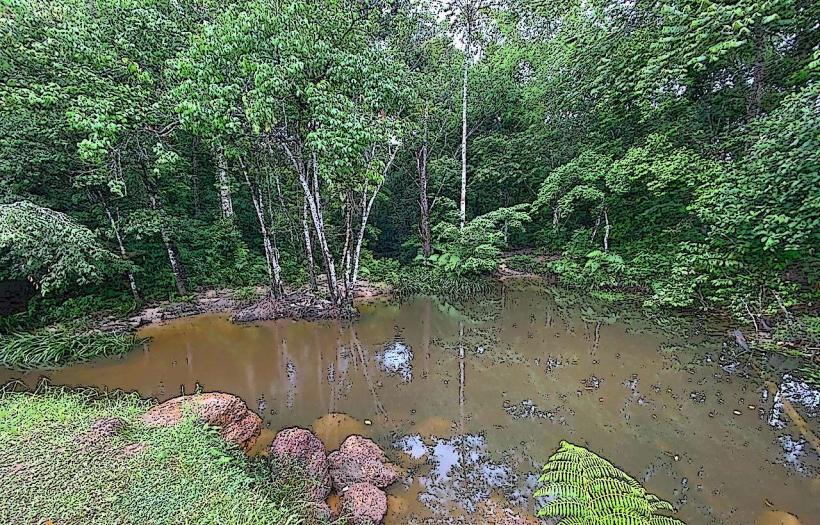Information
Landmark: Kourou ReserveCity: Kourou
Country: French Guiana
Continent: South America
The Kourou Reserve (French: Réserve Naturelle des Marais de Kourou) is a protected area in French Guiana, located near the town of Kourou in the coastal region of the territory. It is part of France's broader conservation efforts to protect the unique ecosystems of French Guiana. The reserve covers an area of about 13,000 hectares (about 50 square miles) and is known for its rich biodiversity, including important wetland and coastal ecosystems. It is located along the Kourou River and is close to the Atlantic Ocean, contributing to its diverse natural environments.
Geographic Location and Features
The Kourou Reserve is situated in the northern part of French Guiana, near the Kourou River, which flows into the Atlantic. The reserve encompasses a range of important habitats:
- Wetlands: The reserve contains vast expanses of marshes and swamps, particularly along the river's estuary. These wetlands provide vital ecosystem services such as water filtration, carbon sequestration, and flood control.
- Mangrove Forests: A significant portion of the reserve includes mangrove ecosystems, which are highly productive and ecologically important coastal wetlands. Mangroves serve as nurseries for many marine species, including fish, crustaceans, and mollusks, and protect coastal areas from erosion and storms.
- Tropical Forests: The reserve is also home to areas of tropical rainforest, which are rich in biodiversity and provide critical habitat for a variety of species.
- Coastal Ecosystems: Given its proximity to the Atlantic Ocean, the reserve includes coastal habitats like beaches and sandbars, which are important for migratory bird species, including seabirds and shorebirds.
Biodiversity and Ecological Importance
The Kourou Reserve is known for its high biodiversity and its role in protecting a variety of habitats that are critical to both terrestrial and aquatic life. The reserve is home to a number of unique and endangered species, particularly those adapted to wetland and coastal environments.
1. Flora
- Mangrove Species: The mangrove forests in the Kourou Reserve include several species of mangrove trees, such as red mangroves (Rhizophora mangle) and black mangroves (Avicennia germinans), which are important for stabilizing coastal soils and providing habitat for marine species.
- Wetland Vegetation: The marshes and swamps are home to a variety of wetland plants, including grasses, reeds, and aquatic species. These plants play a crucial role in water filtration and maintaining the health of the surrounding ecosystems.
- Tropical Trees: In the more forested parts of the reserve, tropical trees like cedar, kapok, and ebony are common, providing shelter for a wide range of animal species.
2. Fauna
The Kourou Reserve is a sanctuary for numerous animal species, especially those adapted to wetland, mangrove, and coastal environments:
- Birds: The reserve is a critical habitat for a variety of bird species, especially migratory waterfowl and shorebirds. Species such as herons, egrets, flamingos, and wood storks frequent the wetlands, while the coastal areas are used by terns, gulls, and pelicans. The reserve is also home to several species of raptors and wading birds.
- Fish and Marine Species: The mangrove and estuarine ecosystems are home to numerous fish species, including mangrove snapper, catfish, and piranhas, as well as crabs and other marine invertebrates. These ecosystems serve as nurseries for juvenile fish and other marine species, supporting the local fishing industry.
- Mammals: Though less common in the wetlands and coastal areas, the reserve is also home to mammals such as otters, capybaras, and howler monkeys, which inhabit the surrounding forests.
- Reptiles and Amphibians: The wetlands provide habitat for caimans, turtles, and a variety of frogs and lizards, many of which are adapted to the wet, humid environment.
Human Impact and Protection
The Kourou Reserve is a protected area, and the main goal of the reserve is to conserve the unique ecosystems and species that live there. The area faces several challenges, including human activity, but it remains relatively undisturbed compared to other parts of French Guiana.
1. Conservation Efforts
The reserve is managed by Parc Amazonien de Guyane (the Amazonian Park of Guyane) and works in cooperation with local and national authorities to ensure its protection. Key conservation activities include:
- Monitoring and research on the flora and fauna of the reserve, including tracking endangered species and monitoring the health of the wetlands.
- Law enforcement to prevent illegal activities like poaching, illegal fishing, and deforestation.
- Promoting sustainable practices in surrounding areas to mitigate the impact of human activities on the reserve's ecosystems.
2. Ecotourism and Education
While the reserve is not heavily visited by tourists, there is potential for ecotourism to help raise awareness about the importance of wetland and coastal ecosystem protection. Visitors can explore the reserve through guided tours, particularly bird-watching tours, which are a popular activity given the diverse birdlife in the area. Educational programs also inform the public about the value of preserving coastal and wetland habitats for both environmental and economic reasons.
3. Threats
Despite its protected status, the Kourou Reserve faces several threats:
- Pollution: Agricultural runoff, urban expansion, and oil spills can negatively impact the water quality of the wetlands and mangrove areas, affecting both plant and animal life.
- Climate Change: Rising sea levels and changing rainfall patterns due to climate change may have significant effects on the coastal and wetland ecosystems of the reserve. These changes could threaten the survival of certain species and the overall health of the reserve.
- Invasive Species: Non-native species, whether introduced intentionally or accidentally, can outcompete native species, disrupt ecosystems, and cause harm to the delicate balance of the wetlands and coastal environments.
Conclusion
The Kourou Reserve in French Guiana is an ecologically significant protected area that serves as a sanctuary for a diverse range of species, particularly those in coastal and wetland habitats. The reserve plays a critical role in preserving the biodiversity of the region, protecting vital ecosystems like mangroves, marshes, and tropical forests. With its rich biodiversity, the Kourou Reserve is not only important for local conservation but also contributes to the broader effort to safeguard the ecological health of French Guiana and the Amazonian region.

